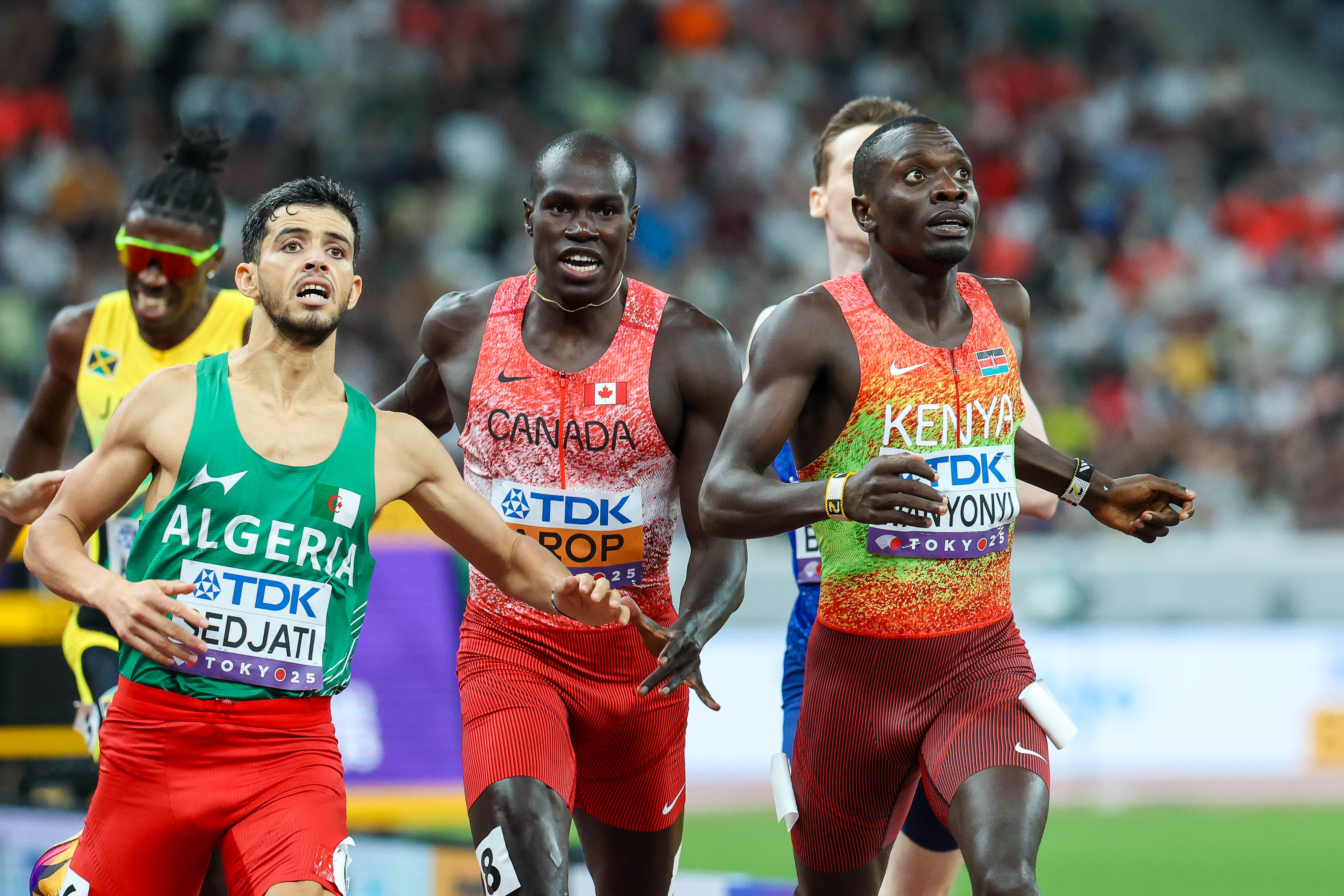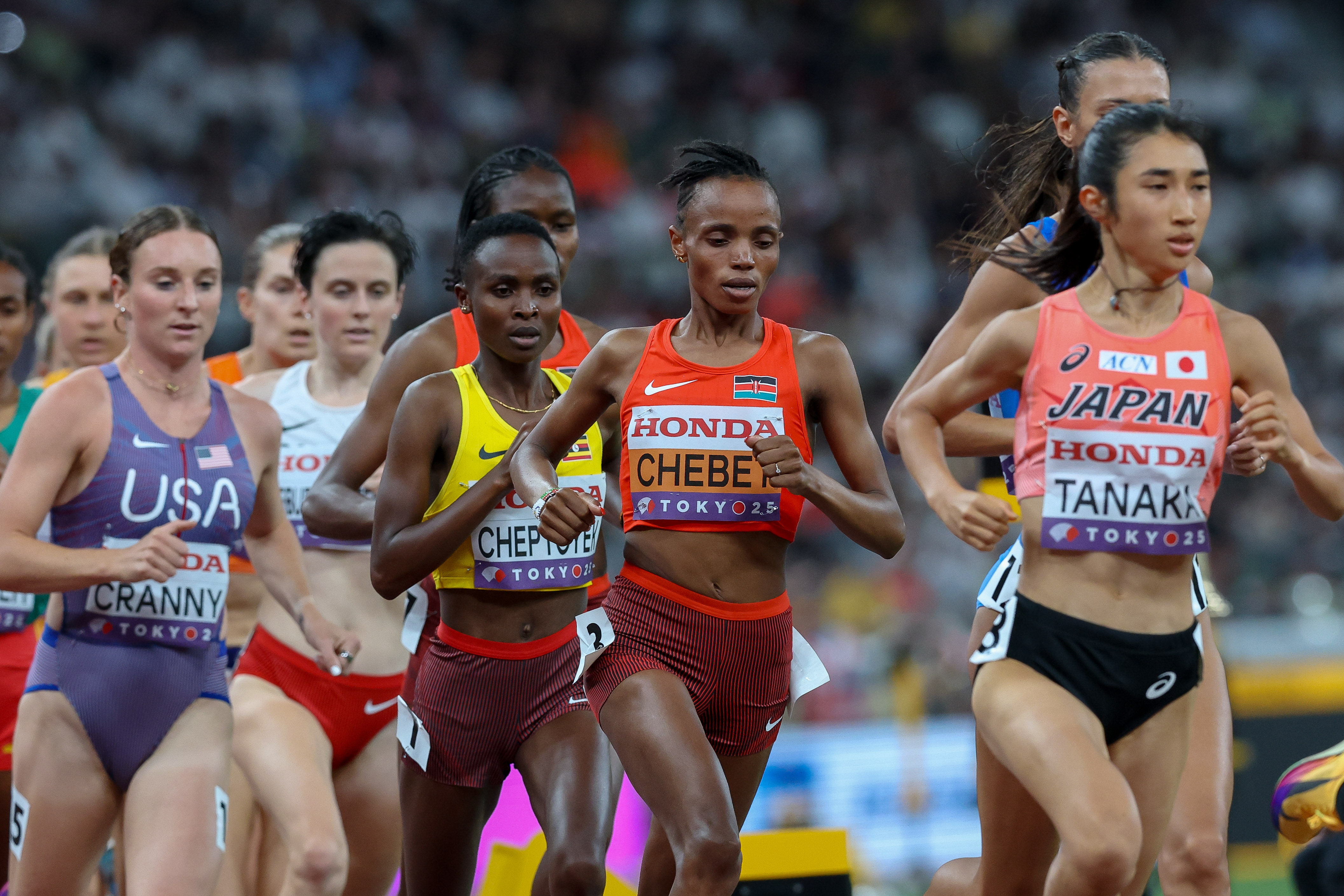

As Kenyans celebrate their victory at the just-concluded World Athletics Championships in Tokyo, the country must also pause to reflect on a growing concern, the dwindling fortunes of the ‘boy-child’ in athletics.
Kenya returned home with 11 medals; seven gold, two silver and two bronze, finishing second behind the USA’s dominant haul of 26 medals.
But beneath the celebrations lies a sobering reality. Of Kenya’s medallists in Tokyo, women carried the bulk of the glory, securing six golds and two silvers, while their male counterparts could only muster one gold and two bronzes.
In fact, the women made history not only for Kenya but globally, sweeping every distance event from the 800m to the marathon. Beatrice Chebet was the standout star of the championships, storming to double gold in the 5,000m and 10,000m.
Faith Kipyegon continued her reign as queen of the metric mile, winning her fourth world title in the 1,500m and adding silver in the 5,000m.
Lilian Odira struck gold in the women’s 800m, Faith Cherotich sealed the 3,000m steeplechase, while Peres Jepchirchir ruled the marathon, and Dorcus Ewoi added silver in the 1,500m.
For the men, however, the return was meagre. Emmanuel Wanyonyi stood alone as world champion in the 800m, with Reynold Cheruiyot salvaging bronze in the 1,500m, and Edmund Serem managed the same in the steeplechase.
The contrast with past glory days could not be starker. In Beijing 2015, male athletes brought home five gold’s through Ezekiel Kemboi (steeplechase), Nicholas Bett (400m hurdles), David Rudisha (800m), Julius Yego (javelin) and Asbel Kiprop (1,500m), with the female athletes Vivian Cheruiyot (10,000m) and Hyvin Jepkemoi (steeplechase) adding to Kenya’s total tally of seven gold medals.
That golden generation feels like a distant memory. The decline became evident in Budapest 2023, where only women delivered Kenya’s gold medals (Faith Kipyegon – 1,500m and 5,000m – and Mary Moraa – 800m). After the Tokyo showpiece, the imbalance is glaring.
National athletics coach Julius Kirwa admitted the disparity, explaining that women had more representation due to wildcards from their previous dominance. “
The 800m, 1500m, 5000m and 10,000m all had wildcards, and this forced us to have four runners in each. The men had no champions from Budapest and therefore, no wildcards,” he said.
But Kirwa was also candid about deeper issues. He called for a review of the selection criteria in the men’s ranks, especially in the 5,000m and 10,000m.
“We must go back to the drawing board to re-examine the selection criteria for the two categories, and especially, the men’s cadre,” he said. In Tokyo, Kenyan men faltered badly in both the 5,000m and 10,000m distance events.

The story was no brighter in the 10,000m. Ishmael Kipkurui narrowly missed the podium in fourth (28:56.48) while Edwin Kurgat was seventh (28:57.83) and Benson Kiplangat failed to finish.
Kenya’s drought in the event stretches back to 2001, when Charles Kamathi famously dethroned Haile Gebrselassie in Edmonton, striking gold in 27:53.25.
Kirwa pointed to road races as a major distraction.
“We do not have many 10,000m races in the Diamond League, and athletes opt for road races instead, which should not be the case,” he lamented. He urged a return to the grassroots, even suggesting that some 1,500m specialists shift to the 5,000m. “We can’t continue accommodating athletes who want to double-deal on track and road races. They must choose between the two,” he said.
He pointed to Kipsang, who had moved from 1,500m to 5,000m and happened to have been the only Kenyan in the final in Tokyo. Going forward, Kirwa feels only the top athlete across the line during National Trials should be guaranteed a place in the Kenyan team. “Those who occupy between positions two and four will have to rely on the final selection closer to the championships,” he noted.
The men’s marathon was equally disheartening. Kenya’s representatives failed to crack the top 10, with Kennedy Kimutai finishing 16th (2:11:45), Vincent Kipkemboi 22nd (2:13:38) and Hillary Kipkoech dropping off. This was in contrast to the female marathoners, where Jepchirchir won the world title (2:24:43) with Jackline Cherono 18th (2:33:17) and Magdalyne Masai failing to finish.
Kirwa called for proper planning for the marathon teams.
“We must inform athletes early of our intentions to have them in the Kenyan squad,” he added.
"Marathoners plan their season early, and most of them will not change because they have committed. They need to be informed eight months in advance so that they can prepare.”
Kirwa said, “Several marathoners were approached this year, in June to be precise, and most of them turned us down. Whoever made the Tokyo team, especially in the men’s category, was our last resort, and we really had to beg,” he added.
Former javelin world champion Julius Yego, who captained the Tokyo squad, believes men’s disciplines are in transition. “We left it too late, and to get back on track will take time,” he said. He pointed to the collapse of the steeplechase dynasty, once Kenya’s fortress.
In the global showdown, no country reigns supreme more than Kenya. Moses Kiptanui opened a 10-year reign for the country in the water and barrier event in Tokyo 1991 before the reign was halted by Saif Saaeed Shaheen, who claimed back-to-back crowns in 2003 Saint-Denis and Helsinki 2005.
Brimin Kiprutom, however, restored Kenya’s dominance over the steeplechase in Osaka 2007 before passing the baton to Ezekiel Kemboi, who secured a historic four world titles (Berlin 2009, Daegu 2011, Moscow 2013 and Beijing 2015) with Conseslus Kipruto the last Kenyan to reign supreme at the London 2017 edition. Yego urged patience and investment in nurturing successors.
“We over-relied on the likes of Kemboi, Brimin Kipruto, and Paul Kipsiele and forgot to groom replacements,” he admitted.
Still, he insisted Edmund Serem’s bronze was a breakthrough to build on.
“It is a good start. We should take advantage and build a team around Edmund.”
But Yego also challenged male athletes to take responsibility
“Most lack patience. When things don’t work, they jump off. I’ve been around since 2007, and it hasn’t been smooth. Between 2007 and 2010, it was very difficult, but I soldiered on,” he said.
For him, success comes from sacrifice and resilience, not shortcuts. “Some of us did not just start performing; we sacrificed everything. He said all stakeholders must be involved if the boy-child is to be lifted,” he noted. He also warned against turning the crisis into a gender war.
“In Beijing 2015, we won seven golds, and five were men’s. Nobody complained then. Now that the women are shining, we must not blame the boy-child but work to lift him.”
He called on Kenyans to be part of the solution to the problems ailing athletics, rather than criticising everything, even when the team was performing well.
National sprints' coach Stephen Mwaniki also weighed in, stressing the urgent need to sharpen the country’s sprinters through greater exposure and longer training camps to build team chemistry.
In Tokyo, Kenya fielded one of its largest-ever sprint squads at a global championship, sending 21 sprinters to fly the nation’s flag in both individual and relay events. Yet, despite the numbers, the contingent returned empty-handed, with no medal to show for their efforts. Mwaniki believes the solution lies in exposing Kenyan sprinters to tougher competition.
He urged the federation to organise more invitational meets where the athletes can measure themselves against continental sprinting powerhouses.
“We need more exposure for our sprinters so they can learn to compete and excel on the big stage.Competing against countries like Botswana and South Africa in invitational events will give us the edge we currently lack,” Mwaniki explained.
He also emphasised the importance of longer, structured training camps to sharpen technical areas, especially in relays.
“We need prolonged stays in camp to build chemistry within the squad and to perfect critical elements like baton exchanges,” he added.

















